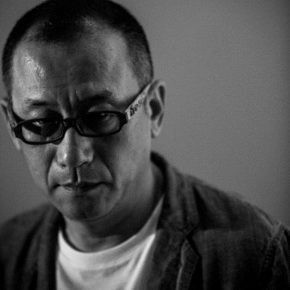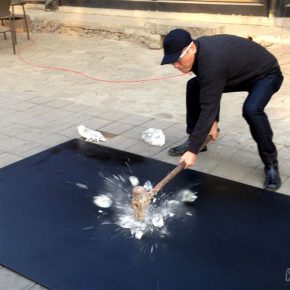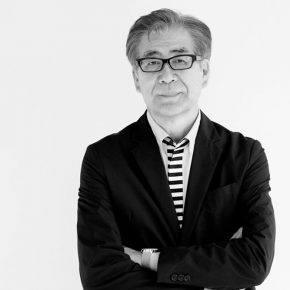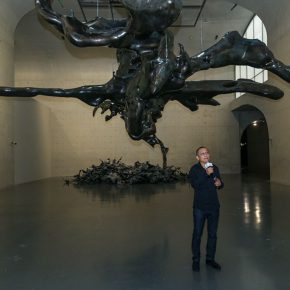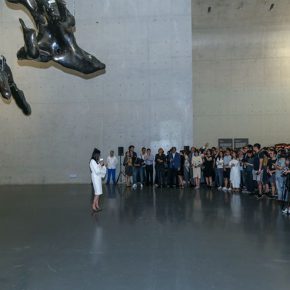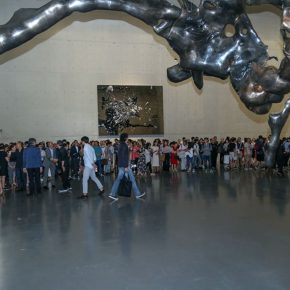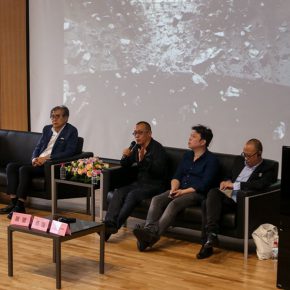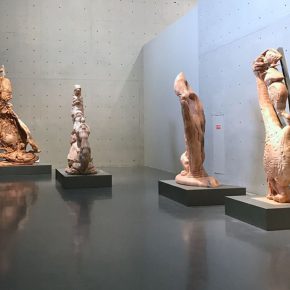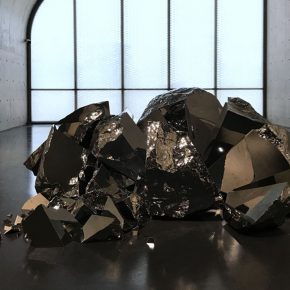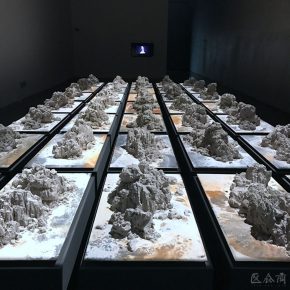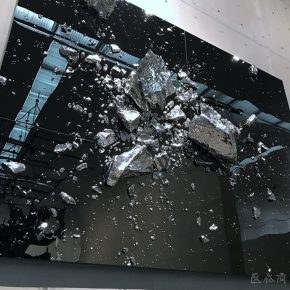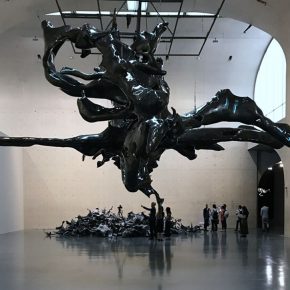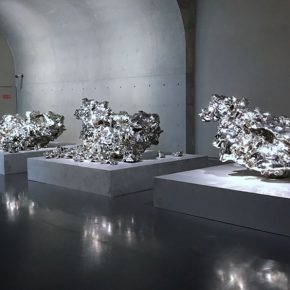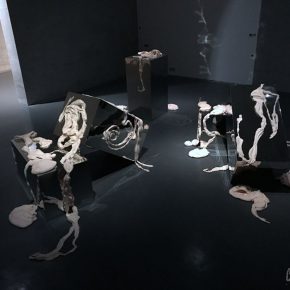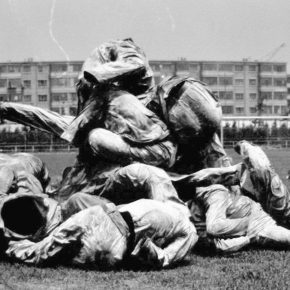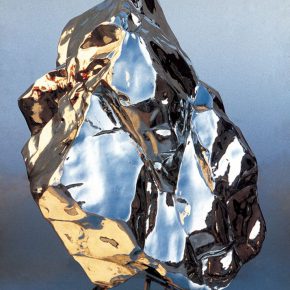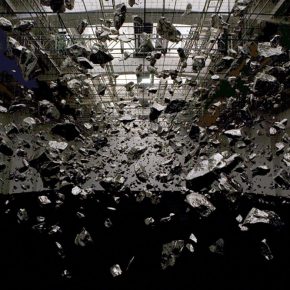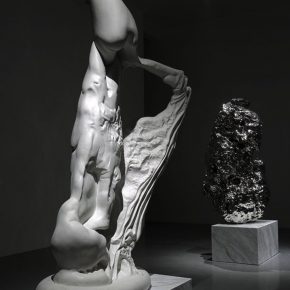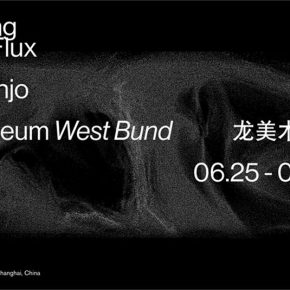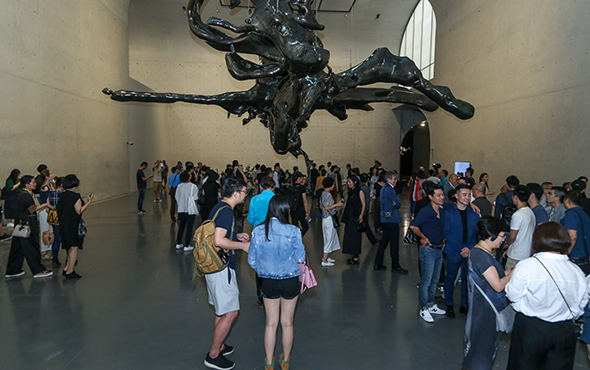
On June 24, 2017, the largest solo exhibition of Zhan Wang’s artistic career to date as well as the artist’s first solo exhibition in Shanghai opened at the Long Museum (West Bund), this exhibition invites the internationally renowned curator and the director of the Mori Art Museum in Tokyo, Fumio Nanjo as its curator. The exhibition focuses on the latest series of works by the artist and backtracks over the artist’s most representative works and creative methods during different periods over the last twenty years, in order to observe the ideas of the practical methods of the artist. In terms of the space of the exhibition, the exhibited works are only a small part of Zhan Wang’s creations, but it is divided into 15 series to showcase the methodology, which are interlocked to form a veritable large solo exhibition.
The reason why it is held at the Long Museum, Zhan Wang said is that it dated back to the opening of the Long Museum 4 years ago. At that time, he was impressed by the cave-style space of the art museum, designed by the architect in a simple T-shape, and he believed that this spatial form set off his works, he spoke frankly stating that once he created his work it was like entering a cave which was a spiritual cave space, which he was constantly exploring, and only when the exhibition was formed, could he gradually walk out.
The latest works “Forms in Flux” and “Flux” are the major structures of the exhibition, which are the latest presentation of the achievements of the artist who has continued the exploration of form for many years, which is also a result of the collaboration between the artist and the mathematicians. The artist’s body was processed by 3D scanning, to form particles, and then placed in the fluid particle field. It uses the methods of Computational Fluid Dynamics and computer instructions to simulate the numerous possible changes of lava in nature. “Flux” is the visualized presentation of the “fluid field”, and the alienated forms were extracted by the artist from the flowing moment, with 3D output to produce a huge three-dimensional model, and then shaped it using stainless steel, in presenting the final shape after firing, which is hung from the ceiling, with the restoration of the flowing moment hidden in digital flux.
This series of works is a breakthrough for the artist who encountered sculpture problems that were difficult to solve before the exhibition with a discussion on “The Boundary and Future of Art”, which stated that there was a paradox when people learned the nature of things, in order to understand the inherent laws, which is an instinctive and direct approach, which only creates new surfaces, so that, Zhan Wang imagined that the human body was composed of numerous particles and then the particles were processed and deformed to get an “internal” world, and this program was eventually completed through a mathematical system with the cooperation of technology companies. “No matter how little the physical world is or how big it is, it is a size, while there is no restriction of size in the mathematical world, where the size is infinite, mathematics can solve problems in nature, nature is conversed to parameters for mathematical operation, the use of algorithm to solve imagined things which are impossible to be realized.”
“Forms in Flux” series is the creative form of Zhan Wang at present and it is trackable in this exhibition narrative, while following the traces that constitute a “growth” in terms of sculptural creation of Zhan Wang. “Mao Suits” series is the earliest work of this exhibition and also constitutes a starting point for the sculptural narrative of the artist, and strictly speaking, Zhan Wang started to be known by the art world for his earliest realistic works, but the artist believes that an artist understands realistic works does not mean his personal creative style starts. In the 1980s and 1990s, sculptures offered more emphasis on publicity, society and collective aesthetics, so that realism has become an important expression, Zhan Wang’s “Mao Suits” series is uses the shapes of struggling tunics and the hollow kernel to form a contrast, to create a metaphor of a dilemma between contemporary society and culture, then a series of discussions began on the relationship between surface and immanence, the individual and the environment. “Artificial Rocks” series has the same strain, the relationship between the gorgeous appearance and empty core set off the contradictions between the material and spirit in the current industrial society. “New Art Quick Training Workshop” is a demonstration of the audience’s participation with a metaphor relating to contemporary popular fast-food culture that abuses the classics. Stainless steel mirrors of “Artificial Rocks” project the artist’s deformed forms, the artist restores the two-dimensional photos to three-dimensional sculptures, forming the “Morph” series. Stemmed from the “fabrication” behind the stainless steel mirrored forms, he used ductile clay to duplicate his own body on the basis of “Morph”, through the destruction, decomposition, metamorphosis of the body to create a variety of special shapes, thus to form a “Metamorph” series, distorting, compromising, redefining the self in between the narratives of the individual and the world. Zhan Wang sighed and said that, “The mirror has changed me and I have changed the sculpture.”
Sculptural creations finish the shaping of the image by increasing and decreasing. The earliest realistic sculptures created by Zhan Wang are naturally a description of the “image”, in the 1990s he started to have a discussion on the issue of “image” based on “concept”, which is multi-dimensionally unfolded, which is about the self, culture, society, time, universe and their relationships, as well as the deformed and alienated things, and in this method and ideas which is both a step by step and a state of “growth”, although the “concept” is rampant at present, the issue of image is still a new question for the artist. Zhan Wang does not have a clear destination for the following creation, but it must be related to the current state of creation, growing from this place.
The exhibition continues to August 22.
Text by Zhang Wenzhi, translated by Chen Peihua and edited by Sue/CAFA ART INFO
Photo by the organizer


